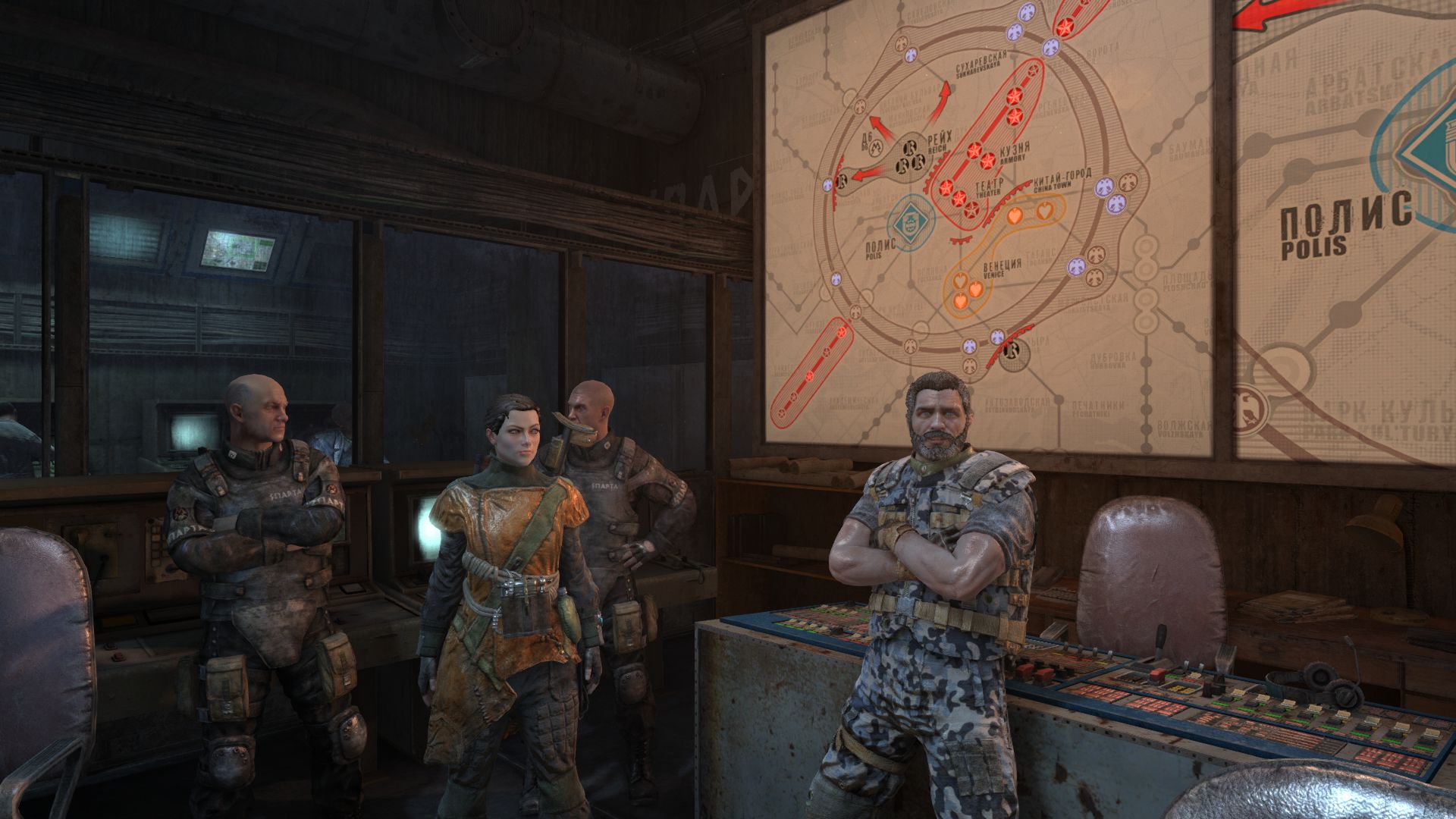For years Metro 2033 was used as a benchmark test for the latest graphics cards, so it feels strange to already be seeing a remastered version hit the digital shelves. Oct 02, 2014 The Metro Last Light benchmark is really not indicative of performance during actual gameplay. Although built around assets from the game's most demanding level, it's a GPU and CPU stress-test.
↑ Metro: Last Light Graphics Breakdown & GPU Performance Guide - GeForce.com ↑ Metro: Last Light PC performance thread - NeoGAF.com ↑ How to move window in Metro Last Light (windowed mode) - YouTube ↑ Windows 10 Resource Monitor ↑ Mouse pointer stutters or freezes when you play certain games in Windows 8.1 and Windows Server 2012 R2. Metro: Last Light Redux Free Download Repacklab It is the year 2034. Beneath the ruins of post-apocalyptic Moscow, in the tunnels of the Metro, the remnants of mankind are besieged by deadly threats from outside – and within. Mutants stalk the catacombs beneath the desolate surface, and hunt amidst.
DX11 - Very High Quality performance
So we start off with a monitor resolution of 1920x1200, I've dropped 1280x1024 and 1600x1200 as there aren't popular monitor resolution any more - all tests have DX11 / Very High Image Quality mode enabled according to the settings we have shown you in the past few pages. This is the internal benchmark, we can only recommend Very High Quality settings for new and modern high-range graphics cards, and here's why. Our scores are average frame rates so you need to take a margin in mind for lower FPS at all times. As such we say 40 FPS for this game should be your minimum, while 60 FPS (frames per second) can be considered optimal. Ideally you start with an Radeon 7970 or GeForce GTX 670, which both are fairly EXPENSIVE but will offer you nice performance versus that great Very High Quality mode.
But can the game run mid-range graphics cards at 1920x1200 / FullHD ?
Difficult - in a more civilized 1920x1200 monitor resolution you'll notice that the numbers are crumbling down fast. Keep that 40 FPS minimum in mind as you want a little reserve. Also keep in mind that all levels are different, some more harsh on the GPU than others. A GeForce GTX 650 To Boost might be great for the money but in this resolution it will be a tough nugget, as well as a Radeon HD 7870. For mainstream graphics cards you're going to need to throttle back to High or Normal image quality modes. BTW, notice that the GeForce GTX 690, Titan and Radeon HD 7990 are so dang close, that actually does smell like a CPU bottleneck right there.
A monitor resolution of 2560x1600 is of course even more complicated, still with a GeForce GTX 680 or Radeon HD 7970 Ghz you could manage the job reasonably well. The internal benchmark is just really heavy. The good news is that overall gameplay definitely feels a hint faster opposed to what you see in the benchmark. So you do have some reserve as the benchmark is extremely taxing.

Post Your Benchmarks (Instructions) :: Metro: Last Light ...
Anmd if SSAA is your thing, we'd recommend something spicy like a GeForce GTX Titan. These are your average framerates at Very HIGH Image Quality settings enabled with the internal benchmark.
Graphics (VGA) performance Recording Level and IQ settings
Before we begin with the graphics performance tests a little explanation. The graphics options are very detailed allowing for significant scaling across systems. V Sync can be turned off but we recommend to leave it on. In Last Light, 4A’s textures are predominantly 2048 pixels wide by 2048 pixels high, double the resolution of textures in many of today's best-looking games. Using these 2048x2048 textures at range creates highly detailed distance views, and up-close with the introduction of a second 2048x2048 texture the visual quality of surfaces skyrockets, hence we really want you to use Very High Quality mode.

Here’s what was adjustable:

- SSAA Anti-aliasing
- Texture detail
- Texture Filtering
- V-sync
- Tesselation
- Motion Blur
Our Graphics test mode : DX11 - Very High Image Quality settings
The mode used today is Very HIGH as even mid-range cards will be capable of managing the game pretty well at 1920x1200. We enable 16xAF and leave motion blur and tesselation at normal.
Cards tested
| GeForce GTX 560 Ti |
| GeForce GTX 570 |
| GeForce GTX 580 |
| GeForce GTX 650 Ti Boost |
| GeForce GTX 660 |
| GeForce GTX 670 |
| GeForce GTX 680 |
| GeForce GTX 690 |
| GeForce GTX Titan |
| Radeon HD 6950 |
| Radeon HD 6970 |
| Radeon HD 7790 |
| Radeon HD 7850 |
| Radeon HD 7870 |
| Radeon HD 7950 Boost |
| Radeon HD 7970 |
| Radeon HD 7970 GHz |
| Radeon HD 7990 |
System setup
- Our test setup is based on Intel X79 (MSI Big bang XPower II) with 8 GB of DDR3 ( Corsair 1600 MHz) memory. The processor is a Core i7 3960X clocked at 4600 MHz.
- We use Windows 7 64-bit SP1 all patched up. Each card runs on the same PC with the same operating system clone. GeForce cards use the latest 320.14 WHQL drivers (download) and for AMD Radeon graphics cards we used the latest 13.5 Beta build 2 driver (download). Both NVIDIA and AMD have released these drivers being optimized for Crysis 3.

Let's head onwards to the next page where we'll look at the performance.
The Test
See All Results For This Question

Metro Last Light Benchmark Download Pc
If you like to try a test run, the game has a built in benchmark. Here's what that looks like, this is the last stage of the benchmark.